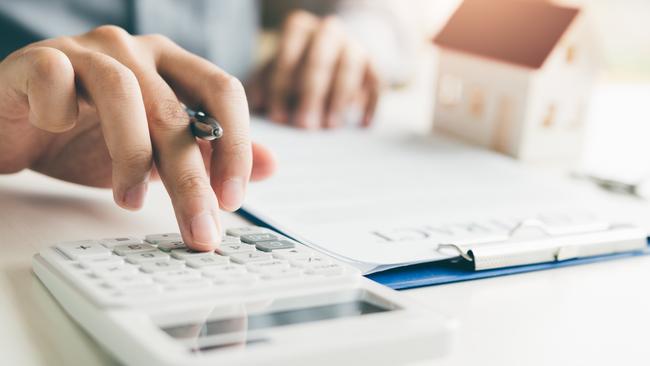What to do if you lose your job during coronavirus and how to save money
Victoria’s second coronavirus wave has wiped out thousands of jobs across the state. But these tips might save your bank balance if you’ve fallen on hard times.

Leader
Don't miss out on the headlines from Leader . Followed categories will be added to My News.
The coronavirus pandemic has created a job loss tsunami across Australia and as restrictions continue, further cuts seem even more likely.
But financial adviser and money.com.au spokeswoman Helen Baker said there were a number of things people could do to safeguard their finances and minimise the financial impact of a future job loss.

“Consumers are struggling financially with many experiencing concern for their job security and the impact this would have on meeting their debt repayments and bill payments,” she said.
“Melburnians may be left in a particularly vulnerable state now given the second wave of COVID-19 forcing businesses to shut down again.
“Aussies should get on top of their finances now to prepare for a risk in loss of income — this could include finding ways to pay down debts faster, building and emergency fund, and creating a second income stream.”
Ms Baker said creating a budget spreadsheet could help people get a “realistic view” of their expenditure against their income to help them get on top of their finances.
TOP TIPS FOR PREPARING YOUR FINANCES FOR A POTENTIAL JOB LOSS
CONSOLIDATE YOUR DEBTS
It’s important to pay down your debt as quickly as possible while you still have a steady income.
If you can, consolidate your credit card debt and person loan into your mortgage by refinancing your mortgage.
Mortgages normally have the lowest interest rates across all loan types.
NEGOTIATE INTEREST RATES
Or move your debts to lower-rate products. While you can consolidate your credit card debt into your home loan, another idea is to transfer your card debt balance to a new zero-interest balance transfer credit card.
Be aware of the interest-free term (usually six months) after which your interest will return to the full rate.
With regards to home loans, for the first time rates have fallen to below 2 per cent. Now is a good time to refinance and save on interest payments.
CREATE A SIX-MONTH EMERGENCY FUND
In a normal economy, Ms Baker recommends that households save an emergency buffer of three months’ worth of expenses — covering your debt commitment and regular expenses — in the event of a job loss as data shows its generally takes three months to find a new job.
In the COVID-19 environment, in which job listings have fallen significantly, consider saving at least six months’ worth of income.
You can build up the fund by reducing your spending to essential items and services, withdrawing superannuation early, or finding a second source of income.
If you are made redundant, the redundancy package can make a sizeable contribution to this buffer, as can your FY19/20 tax return.
GENERATE A SECOND INCOME STREAM
If you aren’t working long hours in your existing job, consider setting up a second income stream.
This could be a casual job or self-employed work such as tutoring or Uber driving.
Alternatively, you could list a garage, parking space, or seldom-used car on share platforms such to generate ongoing income.
If you have kids of working age, discuss as a family how you can work together to increase the household income.
Consider offloading any unused items lying around the house by listing them on platforms such as Gumtree, eBay or Facebook Marketplace.
CONSIDER REDUCING HOURS OVER REDUNDANCY
If your company is starting to discuss a decrease in working hours and redundancies, and offer you a choice, it might be better to have your hours reduced.
The former option could see you become eligible for JobKeeper payments and you may have a job to go back to after the ‘stand-down’ period.
You could also use the extra time to generate a second income or look for a new role. If you take the redundancy offer, you will be looking for a new job in a tough market while jobless.
CONSIDER LOOKING FOR WORK WHILE YOU’RE STILL EMPLOYED
If you think it’s fairly likely that you’ll lose your job, start applying for new jobs now — particularly in industries that are booming.
Employers often look upon employed applicants more favourably. Search for roles outside of job portals and consider networking online through LinkedIn and joining online business events and groups to find suitable positions.
Landing a new role could take a couple of months in a difficult market, and starting early will reduce the chances of being unemployed between jobs.
GET A REALISTIC PICTURE OF YOUR SPENDING VS INCOME
Review all your expenses using a budget spreadsheet that allows you to see all your incoming and outgoing expenses.
Following this, create a spending plan and separate it into your three budget areas: ‘your absolute basics’, ‘nice to haves’, and ‘living the dream’ — the latter representing your goal once you’re back on your feet.
Analyse what the bare minimum is that you can live off, then put the rest away into your savings.
USE YOUR ANNUAL LEAVE — SLOWLY
Consider using some of your annual leave — or long service leave, if applicable — now, as you could be at risk of losing some of your leave if your employer goes into insolvency.
Rather than taking a long stretch of leave, consider taking off one day a week or fortnight.
If your employer is in the unfortunate position of having to decide who they will stand down temporarily, remaining in the workplace and showing your value might help you retain your role.
It will show the company you are flexible and care about their long-term survival.
For more information, visit money.com.au
MORE:
HOW TO GET FREE DOUGHNUTS DELIVERED TO YOUR HOME DURING LOCKDOWN
